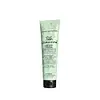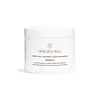What's inside
What's inside
 Key Ingredients
Key Ingredients

No key ingredients
 Benefits
Benefits

 Concerns
Concerns

 Ingredients Side-by-side
Ingredients Side-by-side

Water
Skin ConditioningDicaprylyl Carbonate
EmollientCetearyl Alcohol
EmollientPolyquaternium-37
Myristyl Alcohol
EmollientC12-15 Alkyl Benzoate
AntimicrobialMacrocystis Pyrifera Extract
Skin ConditioningLaminaria Saccharina Extract
Skin ProtectingChlorella Vulgaris Extract
Skin ConditioningLactobacillus Ferment
Skin ConditioningArgania Spinosa Kernel Oil
EmollientPyridoxine Hcl
Skin ConditioningPhytic Acid
Glycerin
HumectantHydrogenated Polyisobutene
EmollientEthylhexylglycerin
Skin ConditioningButylene Glycol
HumectantCaprylyl Glycol
EmollientPPG-3 Benzyl Ether Myristate
EmollientLauryl Glucoside
CleansingTocopherol
AntioxidantZinc Sulfate
AntimicrobialGuar Hydroxypropyltrimonium Chloride
Skin ConditioningBehentrimonium Chloride
PreservativePentylene Glycol
Skin ConditioningPropanediol
SolventVinyl Caprolactam/Vp/Dimethylaminoethyl Methacrylate Copolymer
Skin ConditioningPolyquaternium-11
Stearyl Alcohol
EmollientParfum
MaskingLimonene
PerfumingEugenol
PerfumingPentaerythrityl Tetra-Di-T-Butyl Hydroxyhydrocinnamate
AntioxidantSodium Benzoate
MaskingPhenoxyethanol
PreservativePotassium Sorbate
PreservativeWater, Dicaprylyl Carbonate, Cetearyl Alcohol, Polyquaternium-37, Myristyl Alcohol, C12-15 Alkyl Benzoate, Macrocystis Pyrifera Extract, Laminaria Saccharina Extract, Chlorella Vulgaris Extract, Lactobacillus Ferment, Argania Spinosa Kernel Oil, Pyridoxine Hcl, Phytic Acid, Glycerin, Hydrogenated Polyisobutene, Ethylhexylglycerin, Butylene Glycol, Caprylyl Glycol, PPG-3 Benzyl Ether Myristate, Lauryl Glucoside, Tocopherol, Zinc Sulfate, Guar Hydroxypropyltrimonium Chloride, Behentrimonium Chloride, Pentylene Glycol, Propanediol, Vinyl Caprolactam/Vp/Dimethylaminoethyl Methacrylate Copolymer, Polyquaternium-11, Stearyl Alcohol, Parfum, Limonene, Eugenol, Pentaerythrityl Tetra-Di-T-Butyl Hydroxyhydrocinnamate, Sodium Benzoate, Phenoxyethanol, Potassium Sorbate
Water
Skin ConditioningBeeswax
Emulsion StabilisingButyrospermum Parkii Butter
Skin ConditioningCetearyl Alcohol
EmollientMaltodextrin/Vp Copolymer
Cetyl Alcohol
EmollientOlea Europaea Fruit Oil
MaskingGlycerin
HumectantHelianthus Annuus Seed Oil
EmollientBehentrimonium Methosulfate
Citrus Aurantium Dulcis Peel Oil
MaskingCitrus Medica Peel Oil
Eucalyptus Globulus Oil
Ginkgo Biloba Leaf Extract
Skin ConditioningCetyl Hydroxyethylcellulose
Emulsion StabilisingSodium Benzoate
MaskingPotassium Sorbate
PreservativeBenzyl Alcohol
PerfumingHydrolyzed Quinoa
Skin ConditioningPanthenol
Skin ConditioningLimonene
PerfumingWater, Beeswax, Butyrospermum Parkii Butter, Cetearyl Alcohol, Maltodextrin/Vp Copolymer, Cetyl Alcohol, Olea Europaea Fruit Oil, Glycerin, Helianthus Annuus Seed Oil, Behentrimonium Methosulfate, Citrus Aurantium Dulcis Peel Oil, Citrus Medica Peel Oil, Eucalyptus Globulus Oil, Ginkgo Biloba Leaf Extract, Cetyl Hydroxyethylcellulose, Sodium Benzoate, Potassium Sorbate, Benzyl Alcohol, Hydrolyzed Quinoa, Panthenol, Limonene
 Reviews
Reviews

Ingredients Explained
These ingredients are found in both products.
Ingredients higher up in an ingredient list are typically present in a larger amount.
Cetearyl alcohol is a mixture of two fatty alcohols: cetyl alcohol and stearyl alcohol. It is mainly used as an emulsifier. Emulsifiers help prevent the separation of oils and products. Due to its composition, it can also be used to thicken a product or help create foam.
Cetearyl alcohol is an emollient. Emollients help soothe and hydrate the skin by trapping moisture.
Studies show Cetearyl alcohol is non-toxic and non-irritating. The FDA allows products labeled "alcohol-free" to have fatty alcohols.
This ingredient is usually derived from plant oils such as palm, vegetable, or coconut oils. There is debate on whether this ingredient will cause acne.
Due to the fatty acid base, this ingredient may not be Malassezia folliculitis safe.
Learn more about Cetearyl AlcoholGlycerin is already naturally found in your skin. It helps moisturize and protect your skin.
A study from 2016 found glycerin to be more effective as a humectant than AHAs and hyaluronic acid.
As a humectant, it helps the skin stay hydrated by pulling moisture to your skin. The low molecular weight of glycerin allows it to pull moisture into the deeper layers of your skin.
Hydrated skin improves your skin barrier; Your skin barrier helps protect against irritants and bacteria.
Glycerin has also been found to have antimicrobial and antiviral properties. Due to these properties, glycerin is often used in wound and burn treatments.
In cosmetics, glycerin is usually derived from plants such as soybean or palm. However, it can also be sourced from animals, such as tallow or animal fat.
This ingredient is organic, colorless, odorless, and non-toxic.
Glycerin is the name for this ingredient in American English. British English uses Glycerol/Glycerine.
Learn more about GlycerinLimonene is a fragrance that adds scent and taste to a formulation.
It's found in the peel oil of citrus fruits and other plants such as lavender and eucalyptus. The scent of limonene is generally described as "sweet citrus".
Limonene acts as an antioxidant, meaning it helps neutralize free radicals.
When exposed to air, oxidized limonene may sensitize the skin. Because of this, limonene is often avoided by people with sensitive skin.
The term 'fragrance' is not regulated in many countries. In many cases, it is up to the brand to define this term. For instance, many brands choose to label themselves as "fragrance-free" because they are not using synthetic fragrances. However, their products may still contain ingredients such as essential oils that are considered a fragrance.
Learn more about LimonenePotassium Sorbate is a preservative used to prevent yeast and mold in products. It is commonly found in both cosmetic and food products.
This ingredient comes from potassium salt derived from sorbic acid. Sorbic acid is a natural antibiotic and effective against fungus.
Both potassium sorbate and sorbic acid can be found in baked goods, cheeses, dried meats, dried fruit, ice cream, pickles, wine, yogurt, and more.
You'll often find this ingredient used with other preservatives.
Learn more about Potassium SorbateSodium Benzoate is a preservative. It's used in both cosmetic and food products to inhibit the growth of mold and bacteria. It is typically produced synthetically.
Both the US FDA and EU Health Committee have approved the use of sodium benzoate. In the US, levels of 0.1% (of the total product) are allowed.
Sodium benzoate works as a preservative by inhibiting the growth of bacteria inside of cells. It prevents the cell from fermenting a type of sugar using an enzyme called phosphofructokinase.
It is the salt of benzoic acid. Foods containing sodium benzoate include soda, salad dressings, condiments, fruit juices, wines, and snack foods.
Studies for using ascorbic acid and sodium benzoate in cosmetics are lacking, especially in skincare routines with multiple steps.
We always recommend speaking with a professional, such as a dermatologist, if you have any concerns.
Learn more about Sodium BenzoateWater. It's the most common cosmetic ingredient of all. You'll usually see it at the top of ingredient lists, meaning that it makes up the largest part of the product.
So why is it so popular? Water most often acts as a solvent - this means that it helps dissolve other ingredients into the formulation.
You'll also recognize water as that liquid we all need to stay alive. If you see this, drink a glass of water. Stay hydrated!
Learn more about Water